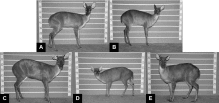Herruzo, A.C., Martínez-Jaúregui M., Carranza, J., Campos, P. (2016) Commercial income and capital of hunting: an application to forest estates in Andalucía. Forest Policy and Economics 69: 53-61.
This paper presents and applies an experimental agroforestry accounting system (AAS) to measure the commercial income and capital of hunting activities in a large territorial area. This application goes beyond the conventional system of national agriculture and forestry accounts. The methodology developed allows the independent valuation of both environmental and manufactured capital which in turn allows the disaggregation of hunting income and other economic indicators by type of capital. The spatial distribution of these economic indicators can also be provided. Results show positive current total capital income but residual manufactured capital income current losses. An underlying economic rationale explaining this phenomenon is offered.
http://www.sciencedirect.com/science/article/pii/S1389934116300910


